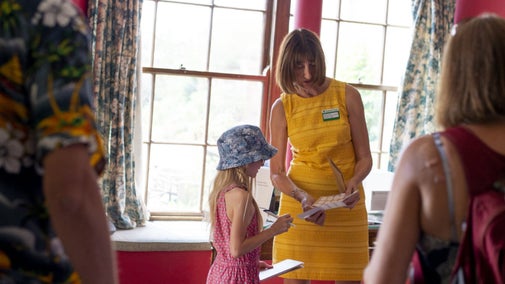How did this affect Killerton?
Killerton was one of the estates given funding to help it work towards a ‘green recovery’. In fact, Killerton benefited from just over £750,000 of Green Recovery funding and completed nine projects over the last 2 years, to start combatting the effects of climate change that threaten the Killerton estate.
Work at Killerton
Work involved planting trees and hedgerows around the estate, increasing agroforestry to support more sustainable farming. The project also delivered a floodplain restoration pilot along the River Culm to provide a better habitat for wildlife and people to enjoy.
This improved habitat also provides a range of opportunities for people to engage with nature and the wellbeing benefits that brings.
Ancient Woodland and Trees
As part of the ‘Ancient Woodlands and Trees’ programme, the Woodland Trust and the National Trust worked together to restore and manage ancient trees and woodlands across the Killerton estate.
This included thinning and removing invasive and non-native species to increase light levels and support natural regeneration of these precious habitats. Both these projects had the added benefit of supporting the local economy by creating jobs.
Find out more on how we’re making Killerton more resilient to climate change with this video.
Green Recovery work on the Killerton estate
1. Restoring the floodplain on the River Culm
Killerton partnered with Westcountry Rivers Trust to start the process of nature restoration in the floodplain from Ellerhayes Bridge to Columbjohn. A selection of speakers gathered in April 2021 to present the 50-year vision and spoke about the plans to deliver the first phase of works.
You can watch the recording of the Webinar on the Connecting the Culm website.
Two kilometers of floodplain have been restored, providing an environment for nature to thrive.
2. Creating new woods
The project at Killerton has seen nearly 70,000 trees planted over an area approximately the size of 130 football pitches. This included 18 hectares of woodland that has been created across the estate, providing more channels for nature to move across the landscape.
3. Wood pasture
The Trust has worked with graziers to create 40 hectares of wildlife-rich wood pasture.
4. Agroforestry
We’ve established partnerships with growers and created five hectares of agroforestry, which will improve soil health through nature-friendly farming.
5. Replanting lost hedges
Working with the SW Farms and Wildlife Advisory Group, the Trust planted 10km of hedges across the estate over the last two years. This will ensure a hedge network that’s bursting with life.
6. Planting trees for the future
The Killerton team planted 400 open-grown trees into the landscape.
7. Restoring ancient woodland and protecting ancient trees
We've partnered with the Woodland Trust to restore precious ancient woodland across the estate. We've also protected 70 ancient trees by giving them more space to thrive, installing drip line fencing and sensitive halo thinning.
8. Accessing nature
Three kilometers of new track has been laid to improve access to nature on the estate and to facilitate habitat management.
9. Wildflower meadows
A vast 3 hectares of species rich wildflower meadows have been restored or created on the estate.














